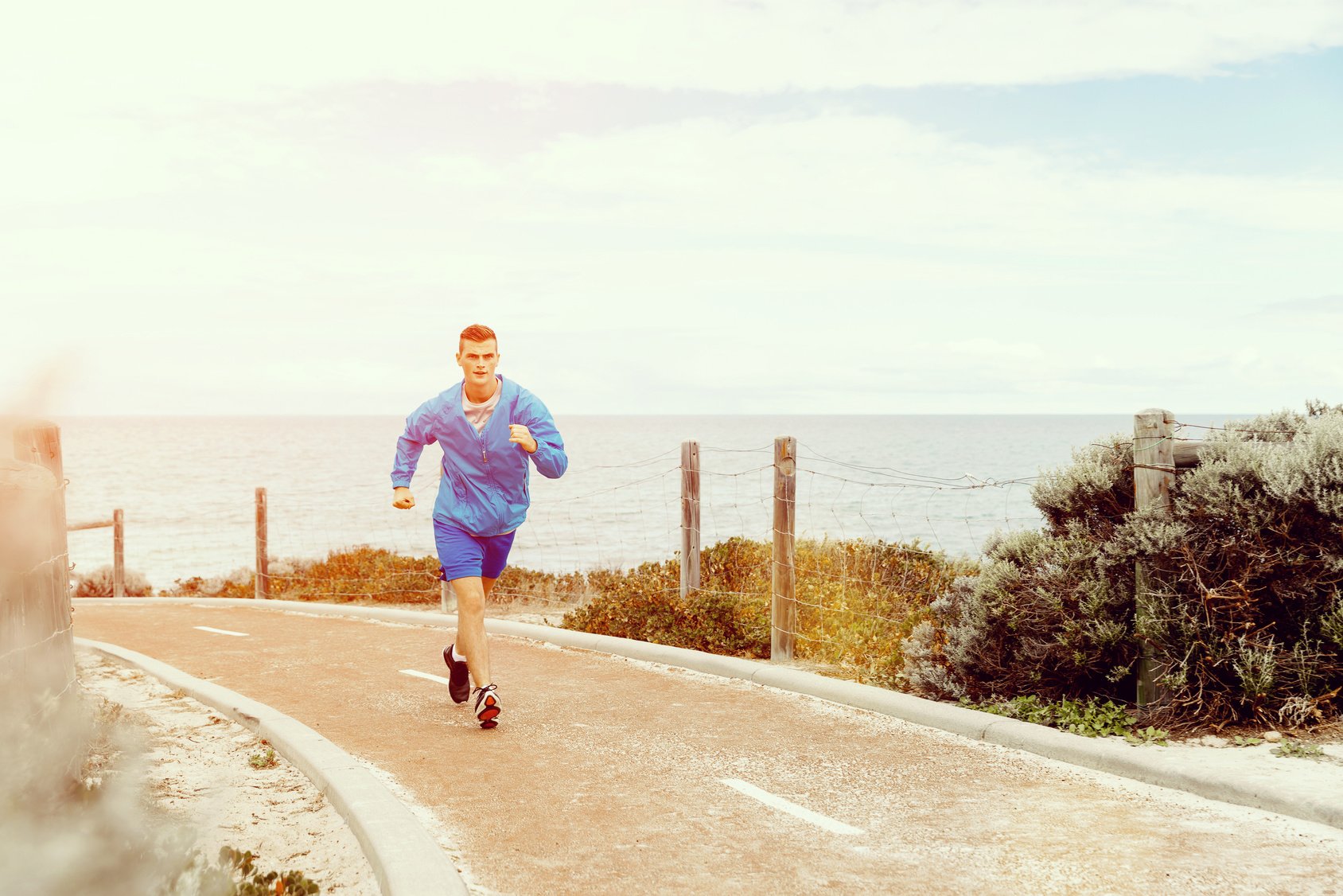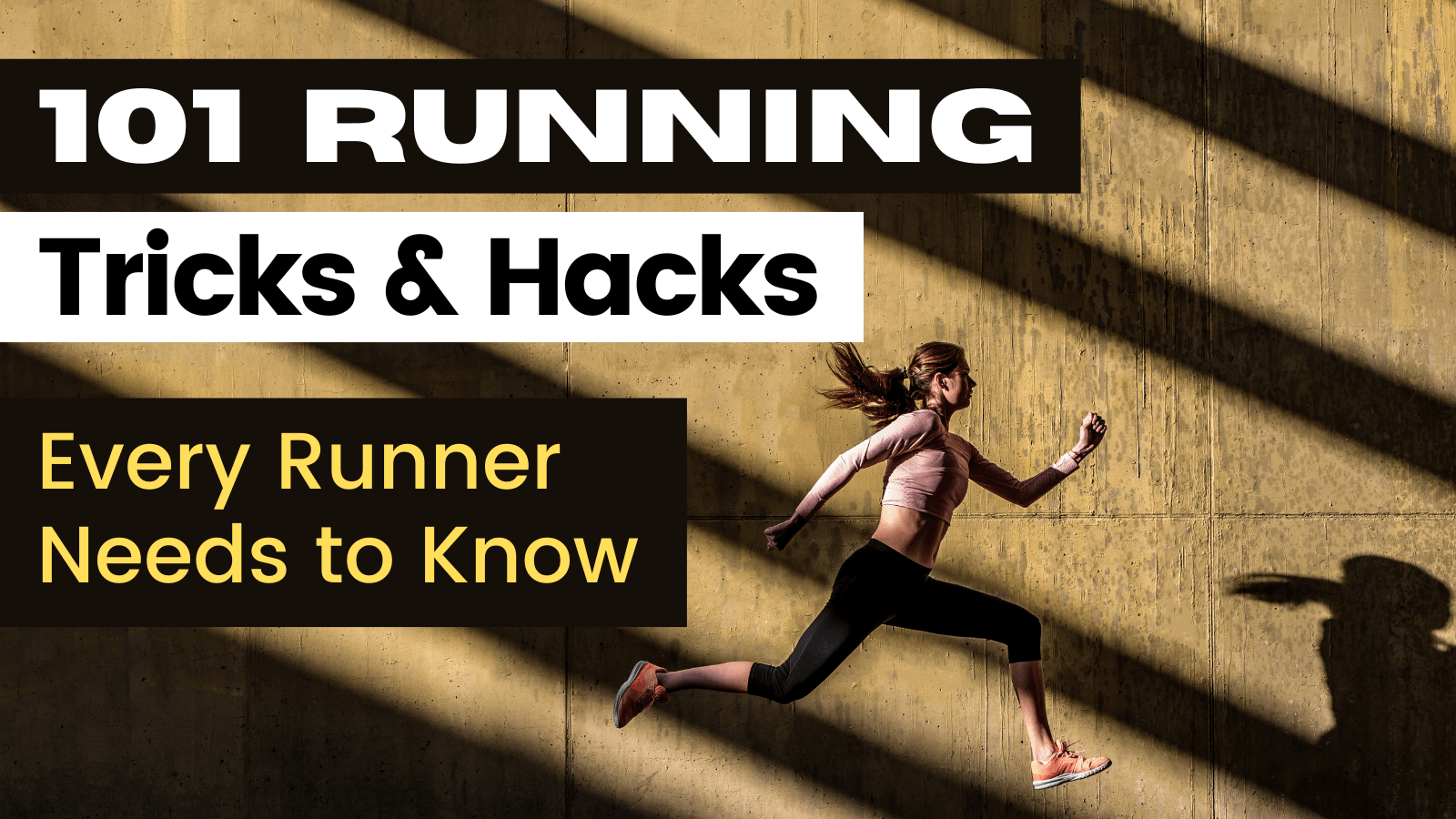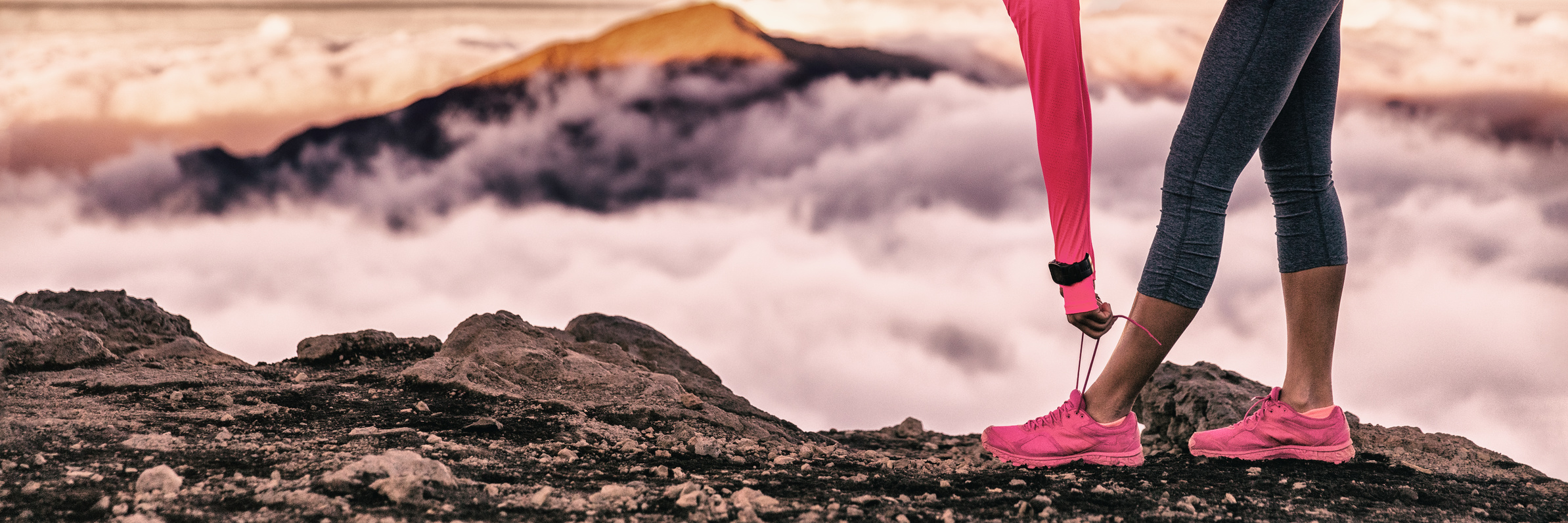Running.
Even the word might make your stomach turn.
If hearing “go for a run” makes you want to hide under the covers, you’re not alone.
As a running coach (and someone who ditched treadmills for beach runs in Bali), I’ve heard every reason why people hate running.
Your legs feel like concrete.
Your lungs are on fire.
Every second drags.
Maybe gym class trauma still haunts you.
Or maybe you’ve tried and failed more times than you can count.
Here’s the thing—you don’t have to love running from the jump. But with the right mindset, a slower pace, and a few real-world tips, you can go from dreading every step to actually looking forward to lacing up.
I’ve seen it happen. People go from “I hate this” to “That wasn’t so bad” to “Wait, I enjoy this now?” The shift starts with understanding what makes running feel so hard—and then doing it differently.
Before we dive into the deep stuff, here are a few quick wins:
- Slow way down: Most people run too fast. Drop the pace. Like, way down. You should be able to hold a convo.
- Start tiny: Don’t chase a 5K yet. Try 10 minutes. Or run-walk. Small is smart.
- Make it fun: Music. Podcasts. Trails. A running buddy (even your dog). Keep it light.
- Flip your mindset: Running isn’t punishment. It’s time for you. Think self-care, not self-torture.
- Stay consistent: Show up often, not hard. Your body will adjust, and it gets better.
Now let’s break down why running can feel so miserable—and how to change that.
1. Why Running Feels So Hard
If running feels like a disaster every time, you’re not wrong. And you’re definitely not weak.
Here’s what’s probably going on:
- It hurts: Running pounds your body in ways it’s not used to. Sore legs, burning lungs, that “what-the-hell-is-happening” feeling? Totally normal when you’re new. I still remember my first 10-minute jog. I legit thought I was dying. But that pain? It’s your body waking up. It won’t last forever.
- You’re out of breath: If you feel like you’re sprinting and gasping, it’s because you probably are—even if it doesn’t look like it. Most beginners go too fast. We’ll fix that.
- Old trauma: Maybe a coach used running as punishment. Maybe you were the slowest kid in gym class. Those memories stick. If you associate running with shame or failure, no wonder you hate it.
- Zero results: You run, sweat, suffer—and the scale doesn’t move. You’re still huffing weeks in. Frustrating, right? But running isn’t magic fat loss. That has more to do with what you eat. And that “runner’s high” everyone talks about? It kicks in later—once your body settles into the rhythm.
- It’s boring: Let’s be real. Running can feel like watching grass grow. Especially if you’re staring at a wall on a treadmill or doing the same loop every day. One of my clients said, “Each minute felt like ten.” Yeah, I get that. But there are ways to fight the boredom.
Here’s what most people get wrong: Running sucks when you do too much, too soon, too fast. That’s it.
Slow it down, shorten it up, and suddenly it becomes something you can actually handle.
And yeah, the suckiness? It doesn’t last forever.
Studies show your body starts adapting. Endorphins and other feel-good chemicals kick in with time and consistency. (Washington Post even says it takes real effort to get to the point where running feels calming.)
You don’t hate running. You hate how you’re doing it right now. That can change.
Run slower. Start smaller. Make it fun. Be patient.
2. Shift Your Mindset: From Punishment to Self-Care
Let’s be real—this whole running thing? It starts in your head.
If you step outside thinking, “Ugh, I have to run because I messed up” or “I hate my body, so I need to burn this off,” no wonder you hate running. That mindset turns every run into a grind.
I’ve been there too—seeing running as a chore, a punishment. But that mental loop? It’ll chew you up and spit you out.
Here’s the fix: stop treating running like a sentence.
This isn’t some punishment for eating pizza or skipping the gym last week. And it’s definitely not payback for those times in school when the coach yelled, “Run ten laps!” because someone dropped the ball.
That kind of thinking makes running feel like a punishment—and who the hell wants to show up for that?
Now, flip it. What if running became your form of self-care? Your “me time”?
A short 20-minute jog can feel like hitting the reset button. Think of it as meditation in motion—or, if you’re like me, a moving brainstorming session that sometimes ends in a taco craving.
Another shift? Stop chasing only the long-term wins. Sure, running can help you lose weight or improve heart health, but those take time. Focus on the right now.
That post-run calm? It’s legit—thanks to your brain’s endocannabinoids (yeah, those natural “feel-good” chemicals your body makes). You might not feel it every time, but often enough, a short run will leave you feeling better than when you started.
That’s the magic.
Also—ask yourself, why do you want to run?
It’s not just about burning calories. Maybe it’s to clear your head after a long day. Or to feel strong enough to chase your kids around the park. Or to prove to yourself that you’re tougher than the voice that says you’re not.
Bottom line: running isn’t a punishment. It’s a privilege. A tool. A way to grow.
3. Start Slow and Small: The Magic of Going Really Easy
Okay, now we get down to brass tacks.
Most people hate running because they make the same rookie mistake: going out too fast, too far, too soon.
It’s like trying to deadlift your bodyweight before you’ve mastered a push-up. You’re asking for pain.
Here’s my golden rule for beginners: slow the heck down. Then slow down again. Seriously.
Think “grandma shuffle” pace. If it feels too slow, it’s probably right.
The goal isn’t to impress Strava. It’s to keep showing up.
Try this: run slow enough that you could hold a conversation. If you’re gasping just to say “hi,” you’re doing too much.
This “talk test” is a simple way to know you’re in the sweet spot.
And yeah, some of you might think, “But that’s not even a real workout.” Doesn’t matter.
Early on, the game is consistency, not crushing it.
Let’s talk run-walk intervals—your new best friend. You do NOT need to run the whole time.
Olympian Jeff Galloway has a famous method: run 30 seconds, walk 30 seconds, repeat.
This is huge: walking isn’t failing. It’s training smarter.
A good Couch-to-5K plan will start you with more walking than running. That’s on purpose.
And yeah, it might feel too easy. But guess what? That’s the point. Let it feel easy.
That’s how you build fitness without trashing your knees or lungs.
Quick pride check: I get it, you might feel silly walking during a “run.” But ditch that ego.
Everyone starts somewhere. I’ve seen future marathoners huff through their first block.
The only failure is quitting because you tried to do too much too soon.
So here’s your challenge:
- Next run, go slower than ever.
- Toss in walk breaks early and often.
- Try something like 2 minutes jog, 1 minute walk.
You should end your run thinking, “I could’ve done more,” not “I need to lie down and cry.”
That’s how you build consistency—and joy.
4. Train Smarter, Not Harder: Fix the Gear, Breathe Better, Run Smoother
Ever feel like running is just way harder than it should be? Like you’re putting in the effort but not getting anything back except sore knees and frustration?
Yeah, I’ve been there. But here’s the truth: small tweaks — the kind most people ignore — can make running feel 10x better. Not easier in a lazy way, but smoother, stronger, more dialed in.
Let’s get into it.
First: Your Gear Can Make or Break You
Running in junk shoes is like hiking in flip-flops or swimming in jeans.
Wrong tools, wrong results.
If your sneakers are beat up or you’re wearing trendy fashion shoes that look good but offer zero support, you’re basically begging for blisters, sore feet, or worse — shin splints and knee pain.
Here’s the truth. Swapping your clunky casual shoes for real running shoes can make running way less painful (and much more enjoyable)
Best advice? Head to a running shop, get your stride checked, and find shoes that match your foot and form.
Comfort wins.
You want something that feels like clouds but gives your feet the support they need.
Same goes for clothes. Cotton sweatpants? Chafing central.
I’ve had athletes limp home from a 5K because of raw thighs and bloody nipples. Moisture-wicking shorts, solid socks, and maybe some BodyGlide in the right spots — that’s your new armor.
Then: Clean Up Your Form
You don’t need to look like an Olympic marathoner. But you do want to avoid running like Frankenstein.
The big one? Overstriding. If your foot lands way out in front of your body, you’re hitting the brakes every step and pounding your joints. That’s a fast track to overuse injury.
Instead, shorten your stride. Aim to land your foot under your hips — not a mile ahead. Think quick, soft steps.
I tell runners to imagine they’re running barefoot on eggshells.
Relax your upper body too.
I used to finish runs with my shoulders in my ears and my fists clenched like I was in a street fight. Now, I keep it loose — drop the shoulders, unclench the fists.
Pretend you’re holding a potato chip between thumb and forefinger — don’t crush it.
Your form should feel like you’re gliding, not forcing.
A slight forward lean (from the ankles, not the waist), and eyes looking ahead, not at your feet. These tiny changes can save you energy and keep you running longer.
Breathe Like You Mean It
Let’s talk breathing — because if you’re gasping and side-stitching by mile one, you’re not alone.
A lot of new runners panic-breathe: shallow, rapid chest breaths that leave you lightheaded and crampy.
Here’s what helped me (and what I drill into clients): breathe deeper and slower. Use your belly. Yep, belly breathing. Your stomach should rise as you inhale.
Try syncing breath to steps — maybe inhale for 3 steps, exhale for 3. It’s not a magic number, just a rhythm to keep you from hyperventilating.
A coach once taught me “box breathing” before runs: inhale, hold, exhale, hold. Just a few cycles. It calms you down and centers your breathing pattern.
Oh, and don’t worry about breathing through your nose only — you need oxygen. Use both your nose and mouth when you run.
This ain’t yoga class; it’s cardio warfare.
And if you get a side stitch? Slow down, walk it off, and try exhaling when your opposite foot hits the ground. Weird trick, but it works [self.com].
Cross-Train & Rest Like You Mean It
Look, I love running — but running alone isn’t enough. If you want to make it feel easier and avoid falling apart, add some strength training.
Even just bodyweight stuff like lunges, squats, and planks a couple times a week. Your muscles are the shock absorbers. The stronger they are, the smoother you’ll move.
And please — take rest days. Rest isn’t slacking; it’s smart. It’s how your body rebuilds.
Don’t go from zero to seven days a week and expect to thrive. I usually tell beginners to start with 3–4 runs per week. On off days, either rest completely or do something easy — walking, biking, yoga, whatever.
Just don’t burn out.
5. Make It Fun: How to Actually Enjoy Running
Yeah, I know — “fun” and “running” don’t always hang out in the same sentence. But hear me out: if all you’re chasing is numbers — miles, calories, pace — you’re missing the good stuff.
Let’s flip the script and find ways to actually look forward to your runs.
Run to Something You Love
Running in silence? That’s fine. But if it feels like a punishment, it’s time to liven it up.
Build a playlist that gets you fired up, or save that wild true-crime podcast or fantasy audiobook just for your runs.
Why? Because research says music can make running feel easier — by up to 10%, according to a Washington Post report. That’s not just in your head. It actually feels easier when you’re jamming to T-Swift or getting sucked into a podcast mystery.
Personally, I save certain episodes of my favorite podcasts just for my long runs — it’s like a mini reward, and it keeps me coming back for more.
ry this: Make a “run-only” playlist or podcast list. Something you only listen to while running. It turns your workout into something to look forward to — not dread.
(Quick coach’s safety PSA: if you run outside, keep the volume low or use open-ear headphones. You want to hear traffic, people, dogs, scooters — especially in places like Bali where drivers treat traffic rules as suggestions. Here’s your full guide to staying safe on the road)
Change the Scenery
If you’re always looping the same block, of course you’re bored. Even I get sick of my usual stretch sometimes.
Find a new path. Drive to a beach trail. Explore that park across town. Hell, even zigzag through neighborhoods you haven’t looked at in years.
Running in nature? Total game-changer. You’ve got birds chirping, breezes in your face, maybe a view you forgot existed.
Running along a tree-lined river path feels totally different from slogging it out on a treadmill— the environment messes with your head in the best way.
Gamify It
Running doesn’t have to be serious all the time. You can make it feel like a game — and I don’t mean splitting hairs over pace charts. I mean actual fun.
Try the Zombies, Run! app — it gives you missions where you “run for your life” from zombies. It’s ridiculous, but I’ve coached folks who swear it got them moving again.
Or invent your own games. “I’ll sprint to the lamppost, jog to the next dog, then walk after I spot three red cars.”
That kind of stuff keeps your brain awake. And it’s also a form of fartlek training.
Run With a Buddy (Human or Not)
Running solo is peaceful, sure. But if you want to make it more fun, bring someone.
When you’ve got a buddy, the miles blur by — especially if you’re deep in a chat about that Netflix show or your latest work rant.
Don’t have a running friend? Check out local Couch-to-5K groups. Trust me, everyone there is just as awkward and unsure in the beginning.
And if that sounds too social for you…
Dogs are always stoked to run. They’ll stop and sniff stuff (read: built-in breaks), and their tail-wagging joy is contagious.
6. Find Your Motivation: Goals, Rewards & That Real “Why”
Let’s be real: motivation is the thing that gets you out the door when everything in you says “skip it.”
If you’ve been hating running, it’s not just about your shoes or pace — it’s that you haven’t found your reason yet. The kind of reason that actually pulls you into your shoes on those days when the couch feels like home.
Let’s break down how to set goals that don’t suck, find your deeper why, and reward yourself like a champ along the way.
Set Goals That Actually Fire You Up
Here’s where a lot of runners mess up — they set goals that sound good on paper but don’t mean much to them personally.
“I want to lose 25 pounds” or “I guess I should run because runners are fit people”… yeah, those sound nice but they won’t get you moving when it’s raining and you’re tired.
What works better? Something specific and personal.
- “I want to run a full mile without stopping.”
- “I signed up for a 5K in two months and I want to finish it.”
- “I want to run three times a week for the next month.”
These kinds of goals give you something to chase, and when you hit them, it feels like a win.
Sign Up for a Race — Even a Chill One
One of my favorite tricks as a coach? Sign up for a no-pressure race.
A 5K, maybe with friends. Just having something on the calendar gives you that gentle push to train, even when motivation dips.
I’ve seen beginners go from zero to “Holy crap, I finished a race!” with this trick alone.
And don’t stress about speed. Pick a beginner-friendly event — some even welcome walkers.
Your only job is to show up and cross that line. That first race can totally change how you see yourself.
Suddenly, you’re not someone who “tries to run.” You are a runner.
Chase Process Goals, Not Just End Goals
Here’s a mindset shift that helps a lot: focus on what you can control.
Instead of only aiming for an outcome (like finishing a 5K in 30 minutes), set a goal like:
- “I won’t skip more than one training run a week,” or
- “I’ll work up to five-mile long runs by the end of summer.”
These kinds of goals keep you grounded and give you mini wins week after week.
Every run you finish? It’s proof. Every checkmark on that training plan? That’s you building momentum.
Track Wins & Celebrate Them
We humans love to see progress.
That little voice in your head? It gets louder when you know you’re getting better.
So track it. Use a journal, an app, a scrap of paper—whatever.
Look back after a few weeks. Maybe you could only run 2 minutes before, and now it’s 10. Maybe your “easy pace” doesn’t feel like slow death anymore.
That’s progress. And it deserves a celebration.
Personally, I geek out over my running app’s graphs. Seeing that line inch higher each week? It fires me up.
- Hit a new longest run? That’s a win.
- First time running three times in a week? Win.
I’ll treat myself to a favorite meal, share the update with a buddy, or just give myself a mental fist bump.
Make It a Game – Rewards Matter
Here’s a little trick: treat running like a video game. You hit certain milestones, you level up, and you unlock rewards.
- Ran 5 times in two weeks? That’s sock-buying time.
- Hit a 5K? Boom — brunch at your favorite spot.
It might sound goofy, but early on, these little rewards help.
Over time, the run itself becomes the reward.
But until then? Use whatever works.
Don’t Let Goals Beat You Up
Here’s something I wish more runners understood: it’s okay to shift your goals.
Let’s say you planned to run a 5K in 8 weeks, but life got in the way and now it’s 10. So what? That doesn’t mean you failed.
Running isn’t a straight line. It zigzags. And that’s fine.
If you start running and discover you actually prefer long walks or hiking, great — run with that.
The goal is to keep moving forward, not hit some arbitrary finish line someone else set for you.
If Weight Loss Is Your Only Goal… Be Careful
Quick warning: If your only focus is dropping pounds and the scale doesn’t move fast, running can start to feel like a punishment. “Why am I doing this if nothing’s changing?”
Here’s the thing: running burns calories, yeah — but not always as much as you expect. And it can make you hungry.
So if you’re looking to lose weight, running helps, but food plays the bigger role.
That said, don’t ignore other wins: better sleep, clearer skin, better moods, lower blood pressure, more stamina. These matter. They’re wins too.
7. Overcoming the Mental Blocks: Tricks to Stop Dreading Runs
Let’s be real — sometimes the hardest part of running isn’t the run itself. It’s lacing up and stepping outside.
That little voice in your head says, “Ugh, I don’t want to today,” and suddenly the couch seems like the smarter choice.
But here’s the deal: if you can beat the mental battle, the run gets a whole lot easier.
Here’s how I (and a bunch of real runners out there) trick our brains into shutting up and showing up.
The 5-Minute Rule: Just Start
This one’s saved my butt more times than I can count. Promise yourself just five minutes — that’s it.
Tell yourself: “I’ll run (or even walk) for five minutes, and if I still hate it, I’ll head back home — no guilt.”
Nine times out of ten, once you’re out there, your body warms up, your brain chills out, and you think, “Well… might as well keep going.” That’s the magic of momentum.
Schedule It Like You Mean It
If your run lives in the “maybe I’ll find time later” category… it won’t happen.
Treat it like a meeting with yourself. Block it off. Tuesday at 7am? Boom. That’s run time.
I lay out my clothes, prep my water bottle, and set my alarm early — especially living in hot Bali weather.
That way, when I wake up, there’s nothing to think about. It’s already decided.
Talk To Yourself (Like You Mean It)
I used to think this was woo-woo stuff too. But it works.
Instead of:
“I have to run and this sucks”, try:
- “I’ll feel better after.”
- “I’ve done hard things before — I’ve got this.”
- “Just one more block, buddy.”
Sometimes I coach myself out loud like a lunatic: “Come on David, strong steps. Get to that damn corner.”
And before a tough run, I’ll picture myself finishing it. That moment when you’re dripping sweat and smiling like an idiot? That image can pull you through the ugly miles.
Break It Down
Feeling overwhelmed mid-run? Don’t think about the whole distance. That’s where dread grows.
Instead, shrink the target.
Tell yourself:
- “Just make it to that tree.”
- “Just keep going for one more song.”
- “Next block, then reassess.”
I still do this on every gnarly hill workout:
- “Just reach that pole.”
- “Alright, now that trash bin.”
And suddenly… I’m done.
Plan for the Hard Moments
Don’t just hope your run feels easy. Plan for when it doesn’t.
Set yourself up:
- Save your favorite song for the final mile.
- Pick a mantra like “strong and steady” to repeat when it hurts.
- Or decide: “If I’m dying at minute 15, I’ll slow down, breathe deep, and then kick it back up when this song hits.”
Having a plan helps kill the fear of hitting a wall. And most of the time, that wall isn’t permanent.
Lean On People
Running solo is great — but when the dread is loud, having someone count on you? Total game-changer.
If I tell a friend I’ll meet them for a run, I show up — even if I’m not feeling it. That social pressure? Powerful stuff.
Even if you don’t have a local buddy, apps like Strava or Reddit check-ins work. When people ask “How was your run?” — you want to have something to say. That keeps you honest.
Drop the All-or-Nothing Mindset
This one’s huge.
You don’t need to crush every run. You don’t even need to finish strong every time. You just need to show up.
One bad run isn’t a failure — it’s part of the process.
Even if you have to walk most of it, you moved. That’s progress.
Make It Easy to Win
I mentioned scheduling, but also notice: When do you feel least resistant?
Some folks knock it out first thing while their brain is still groggy. Others hit it after work to blow off steam.
Personally, late-night runs are a no-go. Once I’m in Netflix mode, game over. So I plan around my energy and habits — not against them.
8. Respect Your Body and Your Journey: Progress Over Perfection
Let’s finish strong with this: stop beating yourself up. Seriously.
The fastest way to hate running is to expect perfection — or to compare yourself to people who’ve been at it for years. Want to actually enjoy this thing?
Respect where you’re at. Run your own race. Period.
Everybody’s built different.
Some folks seem to glide through their first 5K like they were born for it. Others? Not so much.
Maybe you’re dealing with old injuries, extra weight, zero cardio background — whatever the case, it’s your road.
I’ve coached runners who crushed a nonstop 5K in 8 weeks, and others who needed 6 months of walk-run intervals.
Both made progress. Both are legit.
What matters is that you’re showing up and moving forward.
Listen to Your Body
One of the worst rookie mistakes I made was ignoring sharp knee pain.
Thought I could “tough it out.” Dumb move. Landed me on the bench for weeks.
If something hurts bad — sharp, stabbing pain, not just the usual sore quads after hill repeats — take it seriously.
Early on, your job is to build smart mileage, not just pile it on. That means listening when your body yells, “Hey, I need a break!”
Take a rest day if you need it. Cross-train. Do some strength work — especially on your glutes and core, because trust me, those are your running engine.
I always tell my athletes: Resting when you need to isn’t being lazy — it’s how you stay in the game long-term.
Progress > Perfection
This mantra keeps me sane: Progress over perfection.
Did you walk more than planned today? So what — you still got out the door.
Ran slower than last week? Those miles still count.
Don’t wait for the “perfect” weather, gear, form, or mindset. Just run.
Progress is gritty. It’s messy. But it adds up.
Some days your best might be a sluggish 15-minute jog. Other days you’ll surprise yourself with a smooth 3-miler.
That’s normal.
What defines you is not your pace — it’s that you showed up and gave what you had. That’s real progress.
Shut Down the Inner Drill Sergeant
Most runners have that nasty inner voice: “You’re too slow. You should be better. You’re not a real runner.”
Would you say that to a friend? Then don’t say it to yourself.
Start replacing that garbage with things like: “I’m getting stronger every week,” or “I didn’t quit — hell yeah.”
One of my runners told me she used to feel like a failure for taking walk breaks — until we reframed it.
Now, she’s proud of going 2 miles even if she walked parts.
That shift in mindset? Game-changer.
Suddenly, running became something she enjoyed instead of something she dreaded.
It Does Get Easier
I know early runs can feel brutal. But stick with it. Seriously.
Consistency is the secret sauce.
Studies — and my own coaching — show that it takes about 8–12 weeks of regular training to start feeling that groove.
You’ll have small wins along the way: your first full mile, being less winded, bouncing back quicker.
All signs it’s clicking.
I remember a client saying, “Three weeks ago I hated every second. Now I only hate the first five minutes.”
Progress!
One day you might even find yourself thinking, “Wait…am I actually enjoying this?”
And I’ll tell you — you probably will.
And If You Still Hate Running…
I’m gonna be real with you: if you try all this — go slow, stay consistent, find your rhythm — and after a couple of months you still loathe every step, it’s okay to pivot.
Running isn’t for everyone.
You can be just as fit cycling, swimming, dancing, hiking — whatever keeps you active and happy.
Life’s too short to dread your workouts.
But before you quit, ask yourself: Did I really give it a fair shot?
Most people don’t hate running — they hate the way they’ve been doing it. Too fast, too far, too punishing.
Fix that first. Then decide.
I’ve seen folks go from “I hate running” to “Running is my me-time.”
You don’t need to train for marathons to make it part of your life. Just find what works for you.
Conclusion: From Hate to (Almost) Love – Your Running Transformation
Respect your journey. Go slow, be kind to your body, start small, walk when you need, and always prioritize progress over perfection.
That’s how you stop hating running and start embracing it.
Now, take a deep breath.
Feel that little buzz of possibility?
That’s your sign – grab those shoes, and go create your own running story.
Have a great day!















